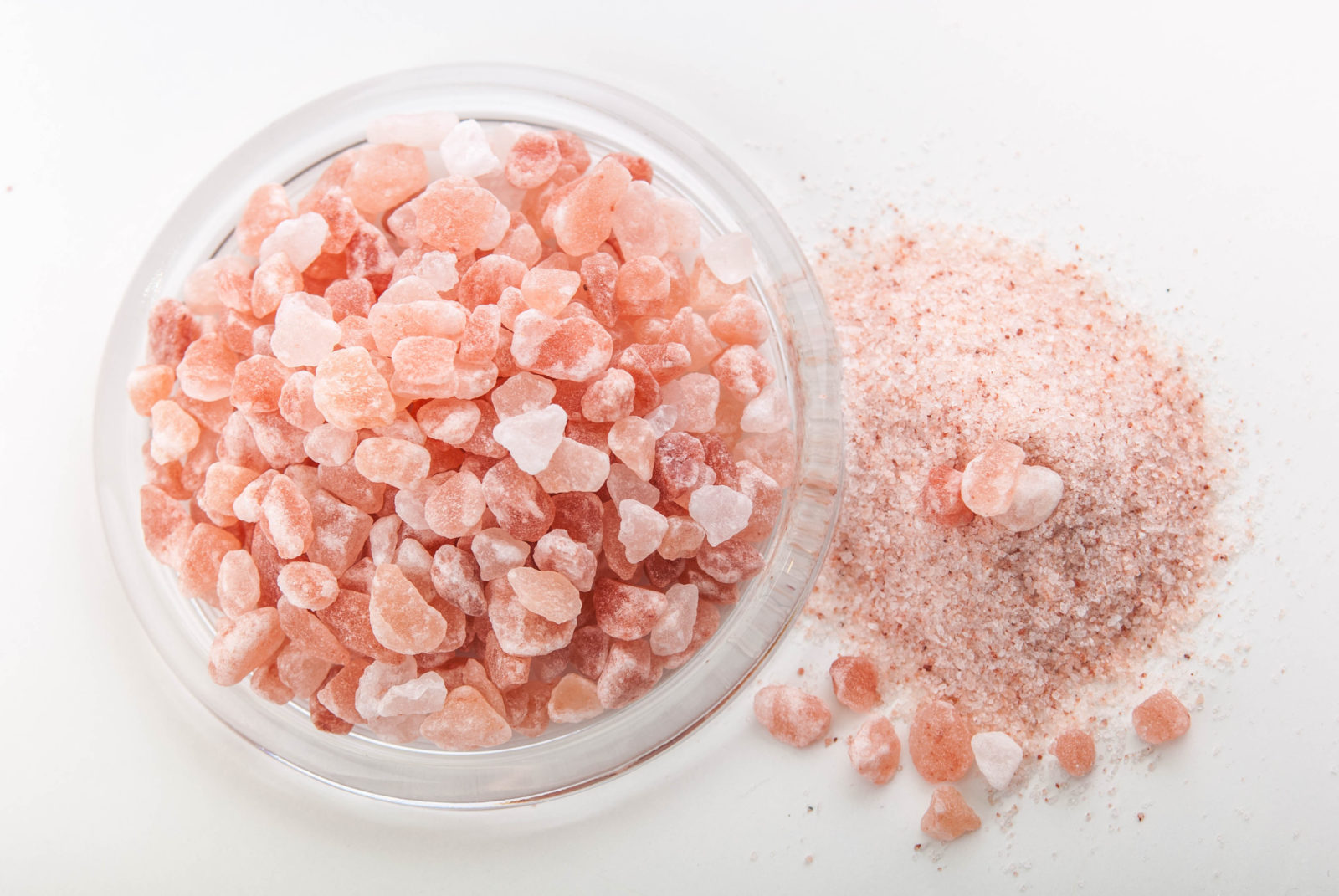Salt – this precious mineral can be found almost anywhere on the planet, though this was not known until the 20th century. Before that, it was desperately searched for, highly prized and without it, humanity would not have grown as quickly into the race we are today. Essential for human existence, without sodium, many of the body’s functions would not be able to continue, it is far more beneficial than simply being used as a pinch in a dish.
As every cell in our body requires water, so does it need salt.
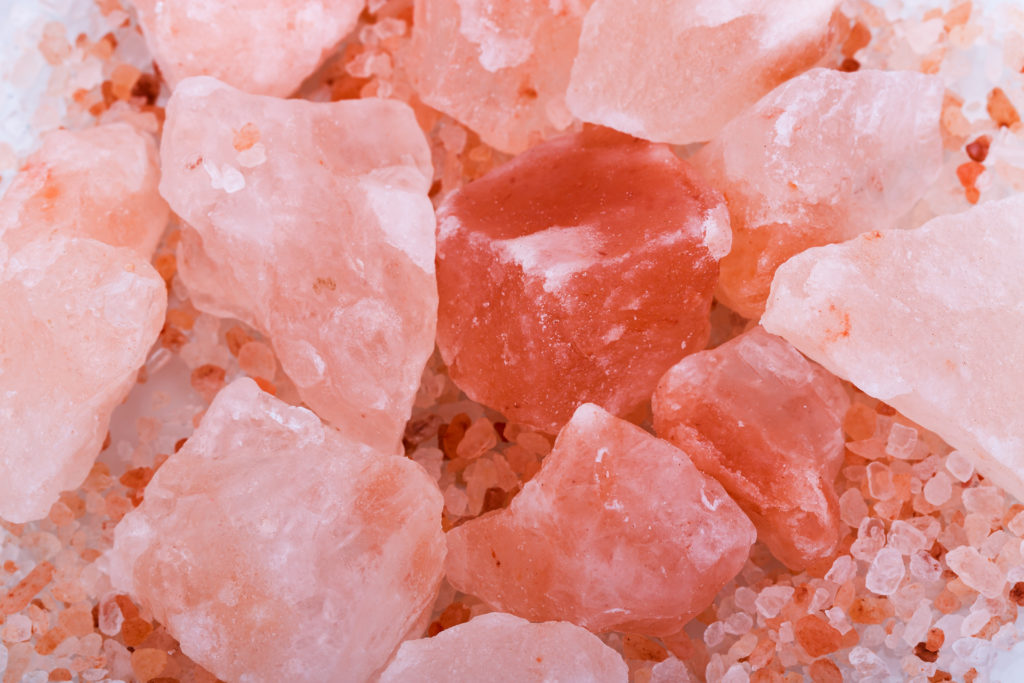
Where Does Himalayan Salt Come From?
When we purchase this beautiful pink salt we may believe that it comes from the Himalayan mountains and although there are mines there, they mainly provide salt at a local and regional level. Most commercially available Himalayan salt does not come from the Himalayan mountain range, instead, they are mainly derived 200 miles southward in the Salt Ranges of Palestine. Pink rock salt is also mined in other places on earth as well.
Khewra Mine: This is the largest mines in Pakistan, with the mine pulling in around 400,000 tons of salt rock a year. Dynamite is used in retrieving the salt from this mine, making it both dangerous for miners and leaving trace amounts of explosives on the salt ( as the salt is unrefined).
Kalabogh Mine: Has 13 distinct strains of salt, the salt is mainly done by hand.
Warcha Mine: 98% pure sodium chloride, beautiful transparent crystal salt. Rock Salt is derived by hand.
Bahadur Khel Mine: The rock salt is light to dark grey, sometimes a brilliant blue.
Karak Mine: The salt that comes from this mine is grey to grey-blue.
Himalayan Salt Formation
Himalayan salt was formed during the Precambrian ear, some 600 million years ago as a giant inland sea evaporated leaving in its wake a salt deposit, which over time was sealed below the search as a result of sedimentary and tectonic plate activity.
The most popular Himalayan salt mines in Pakistan are Kalabogh and Khewra salt mines. Are amongst the largest and oldest salt deposits with an estimated amount of rock salt is between 82 billion and 600 billion tons. Discovered in 320 BC by Alexander the Great, however, it was not until the Mughal reign that the exploration began on the caves.
Himalayan salt can range in color from a soft yellow pink to a deep rustic red, to a magnificent silvery-blue, the colors being dependant on the type of minerals present within them.
Himalayan Salt Properties and Nutrients
Himalayan Rock Salt is between 84-97% pure, a rating set by the Codex Alimentarius Commission. The best grades of Himalayan salt are mined by hand and turned into cubes, platers, planks or giant chunks and used for culinary or purifying benefits.
Himalayan salt contains 84 trace minerals at a percentage of between 2-15% polyhalite (an essential mineral) including sodium chloride, sulfate, calcium, potassium, magnesium, and as it is unrefined the nutrients are more bioavailable than refined rock salt. As this rock salt exists in colloidal form, small enough to be easily absorbed by our cells and gut lining. It also contains less sodium per serving than table salt.
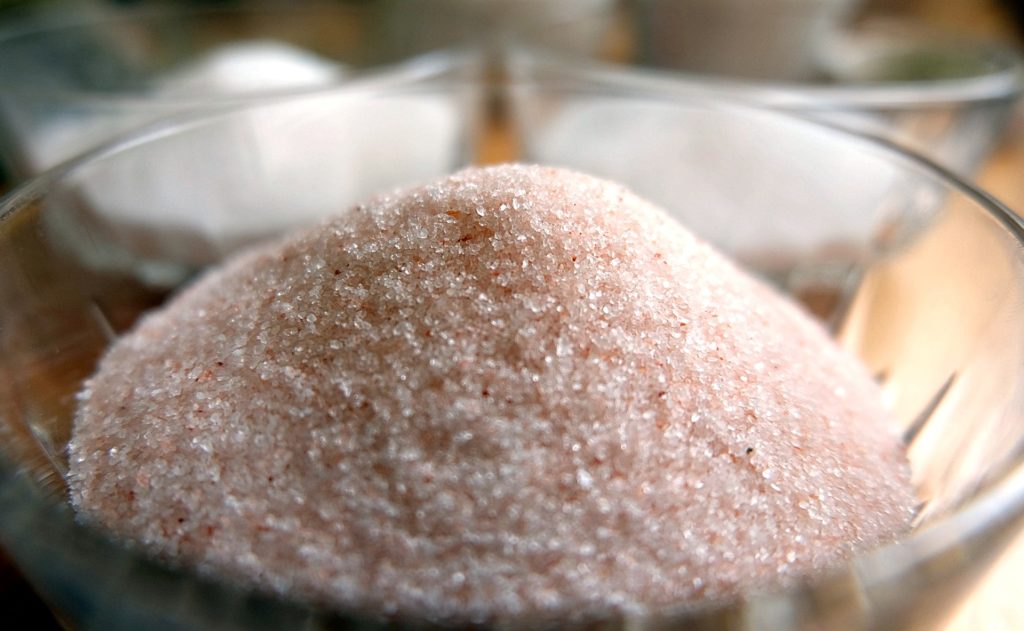
Health Benefits
Sodium is needed by all our cells. The sodium-potassium pump is necessary for cellular energy exchange and all over body and organ balance. It aids in caring nutrients into and wastes out of cells, it is an integral part of our blood plasma, lymphatic fluid, extracellular fluid, and amniotic fluid. Such functions that it conveys are; muscle contractions, electrolyte balance, blood sugar regulation, and pH balance.
Promotes Healthy Sleep
Without salt, the body would not be able to function properly. It is essential for so many functions in the body, sleep being one of them. Salt aids in regulating sleep and is a natural hypnotic.
How to take it: Place a few grains of Himalayan Salt on your tongue and after drinking a full glass of water (this cannot be done without water). This is a natural sleep aid.
Sole Therapy – Electrolyte Balance
A great way to get the benefits of Himalayan salt is with Sole Therapy. This is done by using salt crystals or coarse pink salt, adding it to purified water and letting it sit for at least 12-24 hours before use. With time the water will turn into a saturated mineral solution that is wonderfully bioavailable.
A tablespoon of Sole can be added to a liter of water with a bit of maple syrup and lemon to make your energy drink, or it can be added by itself to a liter of water and drunk after a workout as a way to replenish electrolytes.
Soothing Muscle Cramps
Often we experience muscle cramps/spasms as a result of a lack of magnesium and potassium, or cells do not have the nutrients they need to function properly and they let us know through muscular spasms. Himalayan Rock Salt will not only provide the body with Magnesium and Potassium, but the addition of sodium will aid in transporting those minerals into the body.
Diarrhea
Himalayan salt is beneficial for individuals with diarrhea, as there is a lot of water and electrolyte loss during acute and chronic diarrhea. Pik salt aids in replenishing electrolyte stores in the body, balancing the body’s pH levels.
Mild Adrenal Insufficiency
Rock salt brine is a wonderful treatment for mild adrenal insufficiency. It helps to replenish your adrenal glands with the minerals they need to function properly allowing us to have better control over stressful situations. Alleviating pressure on our adrenal glands helps to bring balance to our hormones as well, such as cortisol, serotonin, adrenaline, and melatonin.
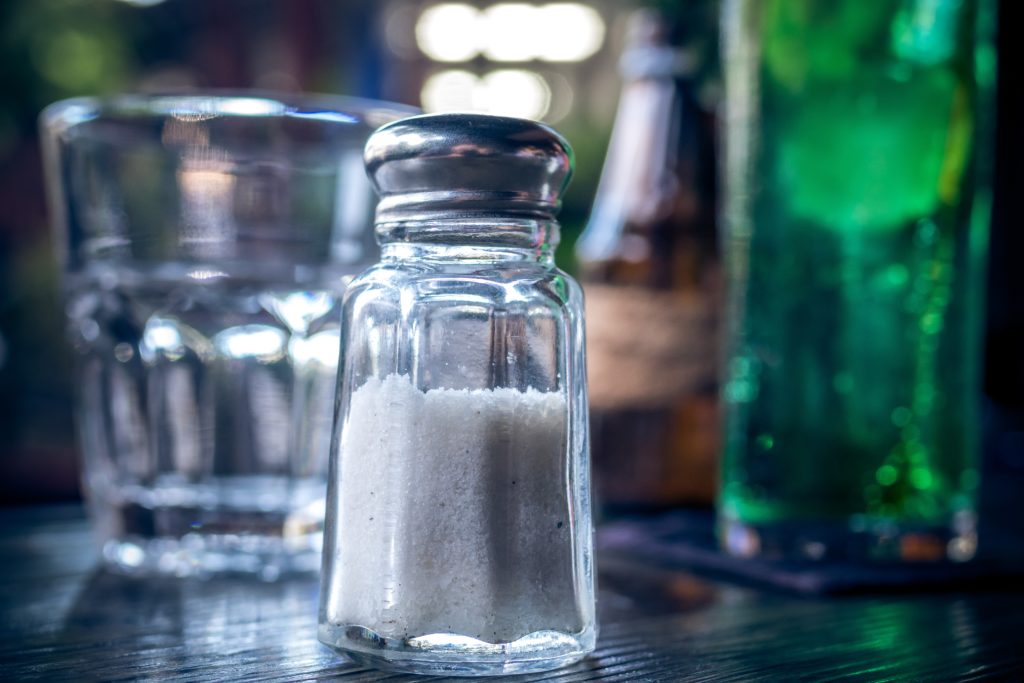
Table Salt Vs. Himalayan Salt
Table salt and most refined salts contain synthetic iodine, which is harder for the body to absorb and utilize.
Common table salt contains two minerals; sodium and chloride. If it is fortified it will also contain synthetic iodine. Table salt is heavily refined, treated at high temperatures, bleached to be a consistent monochrome white, chemically treated and has an aluminum anti-caking agent added to it to prevent clumping (this agent can make the salt harder to dissolve in the body).
Sea Salt, when naturally cured and cultivated has an array of essential minerals, just like rock salt, however, due to the current state of pollution in our oceans, sea salt will often contain chemical residue as well as microplastics. Although a better source of salt than table salt it is important to be wary.
Iodine
Iodine is essential as it enables the healthy function of the thyroid gland, naturally found in seaweed, wild code, wild shrimp, tuna and some plants and land animals can also contain iodine if the soil naturally contains it, however, due to the last Ice Age scraping the earth and modern farming practices there is very little natural iodine found in our soil today. If products such as eggs and milk or bread contain iodine, it is most definitely synthetic and often not the best form for our bodies to intake and utilize.
A lack of iodine can contribute to birth defects in children, particularly in the area of brain development, thyroid dysfunction, the development of goiters, certain types of cancer such as breast, thyroid, lymphatic and prostate.
In 1924 iodine began to be added to table salt to combat the growing number of individuals with goiters. Today most of the developed world does not have a problem with goiters, due to the overuse of table salt in common diets. However, even though Himalayan salt does not contain a high amount of iodine it is still a better option than table salt – as long as you are getting iodine elsewhere in your diet.
Consuming seaweed and/or wild sustainable fish can aid in boosting iodine levels in the body without having to resort to consuming synthetic iodine in bleached and chemically treated table salt.
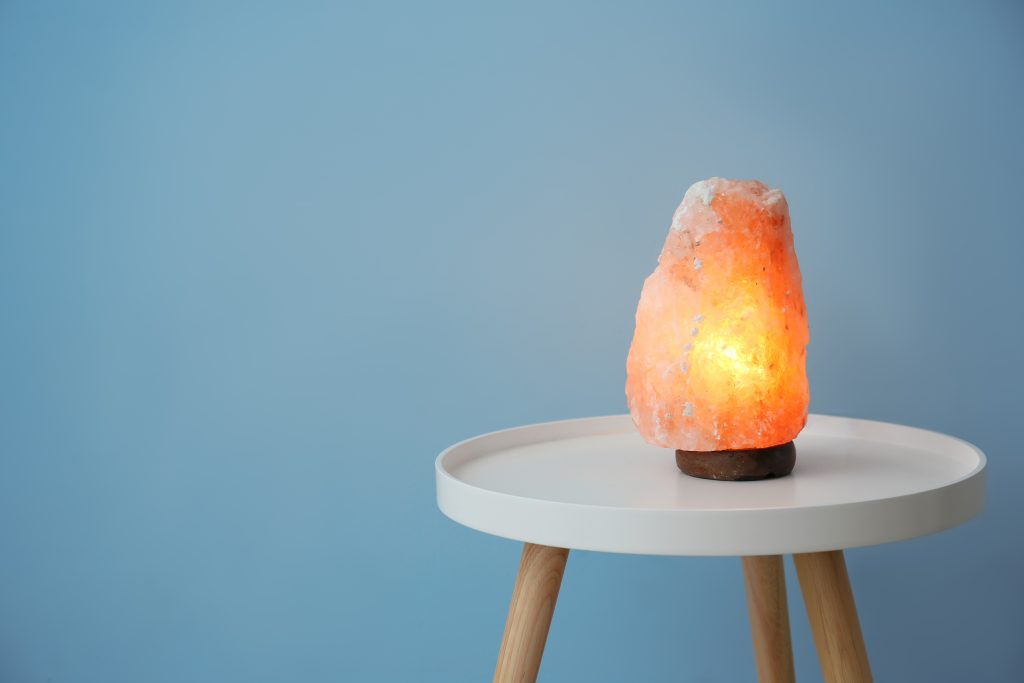
Himalayan Salt Uses
Cooking and Baking – Due to Himalayan salt containing 84 essential minerals along with sodium it does not taste as salty as table salt. It is a wonderful addition to so many dishes, for cooking or baking.
Salt Slabs – Salt blocks or slabs can be used instead of frying pans, on stovetops, ovens or BBQs. It can be used as a cutting board or a serving tray. It can be used chilled to make brittle, ice cream or sorbet. Salt blocks can do so much while also enhancing the flavor and digestibility of the food you prepare.
Bathing – Nourishing the skin and muscles, as well as cleansing the skin. Adding Himalayan salt to a bath aids in relaxation with the addition of lavender essential oil. Add in some baking soda, Epsom salts, and ginger and you have an amazing detoxifying bath.
Air Purifying – The use of Himalayan salt lamps aids in cleansing the air, reducing negative ions. They are natural ionizers, meaning they aid in removing harmful ions from the air in houses, particularly beneficial in rooms with electronics. They also aid in reducing dust and common allergens from the air.
References
Batmanghelidj, F. (2008). Your Body’s Many Cries for Water. United States: Global Health Solutions Inc.
Bitterman, M. (2010). Salted: A Manifesto on the World’s Most Essential Mineral, with Recipes. Ten Speed Press: New York.
Bitterman, M., Schloss, A. (2013). Salt Block Cooking: 20 recipes for Grilling, Chilling, Searching and Serving. Andrews McMeer: Kansas City.
Hughes, N.C., Myrow, M.P., Ghazi, S., McKenzie, N.R., Stockli, D.F., DiPetro, J.A. (2019). Cambrian Geology of the Salt Range of Pakistan: Linking the Himalayan margin to the Indian Craton. GeoScience World.
Sarker, A., Ghosh, A., Sarker, K., Basu, D., Sen D.J. (2016). Halite: The Rock Salt. Enormous Health Benefits. World Journal of Pharmaceutical Research. Volume 5, Issue 12, pages 407-416.
Amanda Filipowicz is a certified nutritional practitioner (CNP) with a bachelor in environmental studies (BES) from York University. She also has certification in clinical detoxification, prenatal and postnatal care as well as nutrition for mental health. She has been working as a nutritionist since 2013 and is a lifelong proponent of eating healthy.

